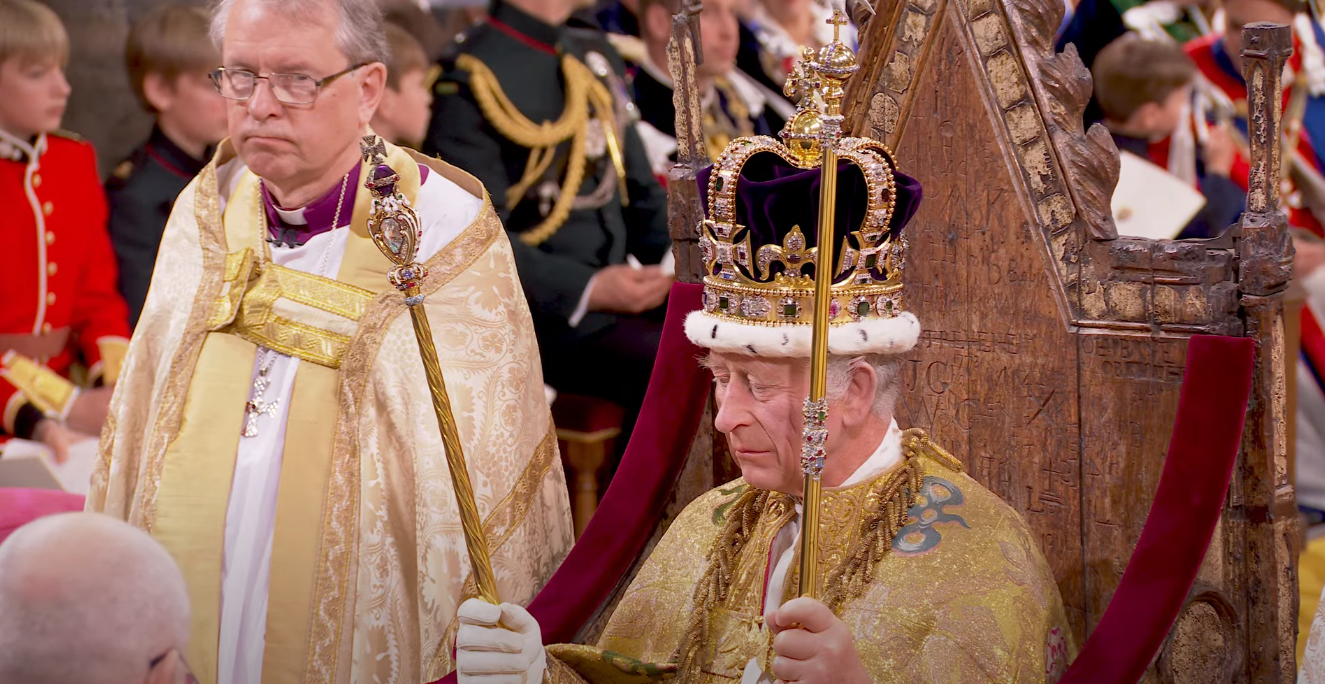On a historic day in London, King Charles III and Queen Camilla were crowned in a grand ceremony full of music and symbolism at Westminster Abbey. The Archbishop of Canterbury, Justin Welby, placed the St Edward’s Crown, which is 360 years old, on the head of the new King, before proclaiming, “God save the King!” The enthronement traditionally represents the monarch taking possession of his kingdom. After the crowning, a fanfare was played, and the bells of the abbey rang for two minutes, with gun salutes fired from nearby Horse Guards Parade, the Tower of London and other saluting stations across the nation, as well as from warships at sea.
Around 2,200 people attended the ceremony inside the abbey, including the Royal Family, celebrities, faith leaders, and heads of state from across the world. After the ceremony, the new King and Queen took part in the Coronation Procession through the streets of central London in the Gold State Coach. Thousands of people lined The Mall to catch a glimpse of the royal couple as they returned to Buckingham Palace. Later, they greeted crowds from the Palace balcony.
However, the coronation was not without controversy. Earlier in the day, leading members of Republic, the anti-monarchy group, were among people arrested near Trafalgar Square. The group has long campaigned for the abolition of the monarchy in the United Kingdom, and their actions sparked debate about the relevance of the monarchy in the modern world.
The coronation of a new monarch is always a significant event in the United Kingdom, and King Charles III’s coronation was no exception. The ceremony was full of symbolism, from the robes worn by the new King and Queen, to the music played and the gun salutes fired. The coronation also had political and religious significance, with heads of state and faith leaders from around the world attending.
The coronation of King Charles III comes after the death of his mother, Queen Elizabeth II, who passed away after a long reign of over 60 years. Queen Elizabeth was widely respected and loved by the British public, and her reign saw many significant changes in the United Kingdom, from the end of empire to the rise of multiculturalism. King Charles III has big shoes to fill, and his coronation marks a new chapter in the history of the United Kingdom.
The monarchy is an institution that has been a part of British life for over a thousand years. While some argue that the monarchy is outdated and irrelevant, others see it as an essential part of the country’s heritage and identity. The role of the monarchy has changed over the years, from absolute power to constitutional monarchy, and it continues to evolve.
In recent years, the monarchy has faced several challenges, from the death of Princess Diana to the fallout from Prince Andrew’s association with Jeffrey Epstein. However, the institution has also shown its resilience, with Prince William and Prince Harry carrying on their mother’s legacy through their charity work and activism. The coronation of King Charles III is another opportunity for the monarchy to demonstrate its relevance and adaptability.
The coronation also raises questions about the future of the monarchy. King Charles III is 74 years old, and it is unclear how long his reign will be. Some speculate that his son, Prince William, may be the last King of the United Kingdom, as he represents a new generation of royals who are more in touch with the concerns of the public. However, others argue that the monarchy will continue to adapt and thrive, as it has done for over a thousand years.



